Indo the future: Explore all 3 Indonesian restaurants in Orange County

- Share via
Why has Indonesian food only been a footnote in Southern California’s restaurant scene?
Are the more unique ingredients, like kecap manis, a thick soy sauce sweetened with palm sugar, and terasi, a malodorous paste made from fermented shrimp, too exotic?
After being accustomed to Asian stir-fries like beef-and-broccoli, do Americans not have the room for rendang, the long-simmered beef dish that tastes best the next day when its spices have had a chance to deepen and meld?
And why hasn’t mie ayam — an addictive dish of oil-slicked noodles topped with morsels of chicken — become as ubiquitous as ramen? Is it because the soup is served on the side?
Also, what about nasi bungkus, arguably the most popular dish served by the few Indonesian restaurants in Southern California? Can’t they see that the banana-leaf wrapper— which Indonesians used as take-out packaging before Styrofoam was invented — is not only environmentally-friendly, but also imparts a faintly sweet botanical aroma to the rice and meats encased in it?
Why does gado gado — a salad smothered in a sweet and spicy peanut sauce and garnished with shrimp crackers — the dish that has the potential of being the Indonesian-food gateway drug like pho is to Vietnamese, languish in obscurity? Is it because it’s regretfully unphotogenic in the age of Instagram?
The real answer, perhaps, is simple demographics. Though Southern California is home to about 50,000 Indonesians, the largest cluster in the United States, that’s half the number of Thais and just a fraction compared to the Vietnamese population. Without a Thai Town or Little Saigon-equivalent epicenter for the community, the diaspora is dispersed. Consequently, finding an Indonesian restaurant is rare, especially in Orange County where for decades there were none.
In the past few years, that slowly changed. One restaurant opened. Then came another. With the newest Indonesian restaurant opening in Tustin late last year, the most recent tally is three. Though still insignificant compared to most other Asian food, Indonesian cuisine representation in O.C. is now the best it’s ever been. So, if you’re not yet acquainted, here’s your chance to be introduced to the cuisine of the fourth most populous nation on Earth.
Try one or all the restaurants listed below. Each is spread out on the map such that no matter where you live in Orange County, you’re now not more than 15 miles from tasting gado gado and rendang.
Indo Ranch
22722 Lambert St., #1701
Lake Forest
Even if you only count the six years that Nataly Michellou has owned and operated it, Indo Ranch is the Methuselah of Orange County Indonesian restaurants. But if you include the time Indo Ranch functioned as a grocery store that stocked prepared dishes out of a refrigerated case, it has been around for at least a decade — practically an eternity for any restaurant, let alone an Indonesian one that exists in the leafy, bedroom community of Lake Forest.
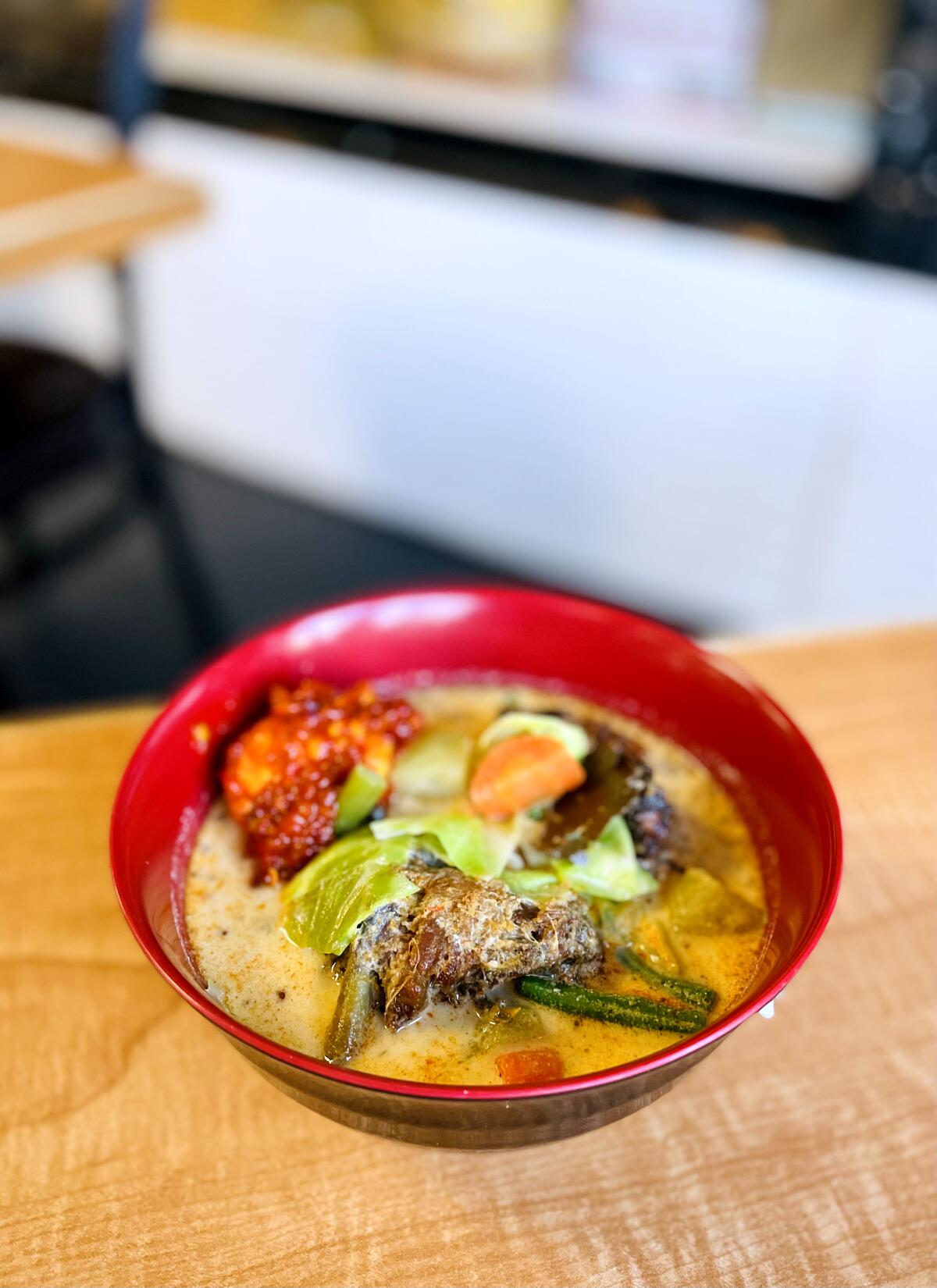
Back then, the original owner — who still owns and operates the grocery-store part — had ambitions to turn the space into a full-service eatery. Those plans never came to fruition until Michellou came into the picture and bought the restaurant.
With 15 years of experience working in the industry and recipes from a mom who had a catering business, Jakarta-born Michellou transformed Indo Ranch into what it is today. She offers a menu that boasts about 50 permanent dishes. They include nasi bungkus, two kinds of mie ayam, and a slew of desserts. In addition, she scribbles daily specials on a white board that can, on occasion, feature nasi gudeg, a uniquely Javanese jackfruit stew served with rice and traditional accompaniments — a dish as inextricably linked to a city called Yogyakarta as New England is to clam chowder.
In the lontong cap go meh, soft cubes of steamed rice cake called lontong hide beneath lodeh, a light but spicy coconut milk-based soup. Fried chicken and a brick-red telor balado (a deep-fried hard-boiled egg simmered in chili) crown the top. The dish’s main three components — the lontong, the lodeh, and the telor balado — are so unique and exclusive to Indonesian cuisine, it’s impossible to find a more Indonesian meal even if you tried.

Indo Ranch was recently remodeled. Now bifurcated down the middle by a wall made of shelving, the grocery store — which remains Orange County’s preeminent imported-goods supplier of Indonesian staples such as Blue Band margarine and tapioca crackers called krupuk — sits on one side. Michellou’s kitchen and dining tables sit on the other. Both exist in a symbiotic relationship that serves as a one-stop shop for homesick Indonesian expats.
Uncle Fung Borneo Eatery
7855 La Palma Ave., Suite 5
Buena Park
The Buena Park branch of Uncle Fung opened in 2018 and like its sister restaurants in Long Beach and Alhambra, it served Indonesian food. But as owner Peter Then is from Borneo, the island that Indonesia shares with Malaysia and Brunei to the north, Peranakan dishes such as laksa are also part of the menu. And that’s a good thing.
Even if you count O.C.’s few Malaysian restaurants, Uncle Fung’s laksa is among the best. A product of the blending of Chinese and Malay cultures, the dish — an intensely spiced noodle soup balanced between the creaminess of the coconut milk, the fishiness of the shrimp paste, and the heat of chilies — is a Southeast Asian history lesson in a bowl.
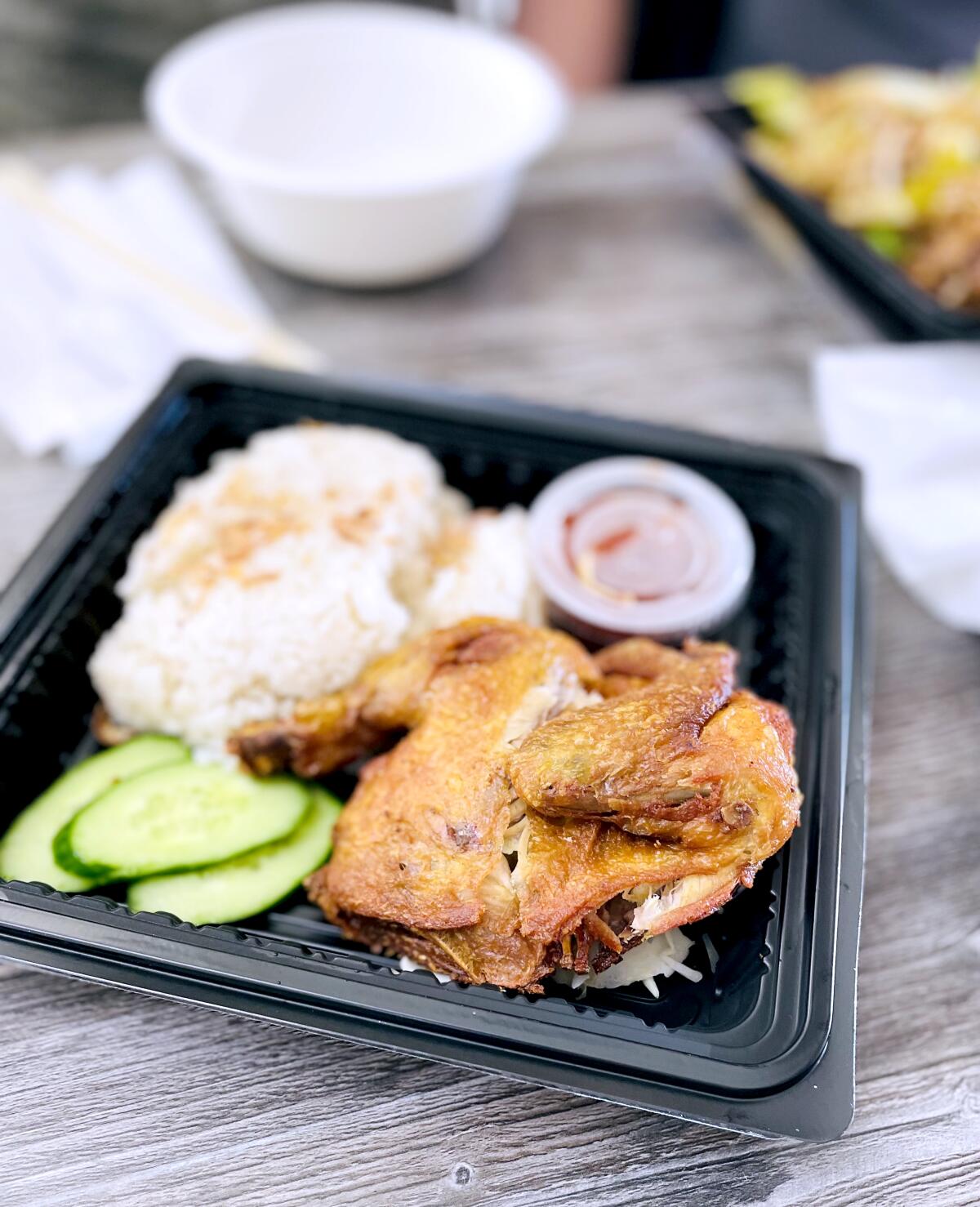
But the gado gado here is still uncompromisingly Indonesian, complete with a lovely peanut sauce, tofu, boiled veggies, and a generous sprinkling of crispy shallots. Other dishes, such as the ayam penyet nasi lemak, combine the distinctly Indonesian “smashed” Javanese fried chicken with the coconut-milk steamed rice well-known as Malaysia’s national dish.
Cherry-picking the best dishes of the region and spreading the gospel of Indonesian food has always been Uncle Fung’s mission. With those ambitions, O.C.’s second location of Uncle Fung opened in Santa Ana in early 2019. But the fledgling branch did not survive the pandemic. The Buena Park location was also shuttered temporarily as they struggled with staffing.
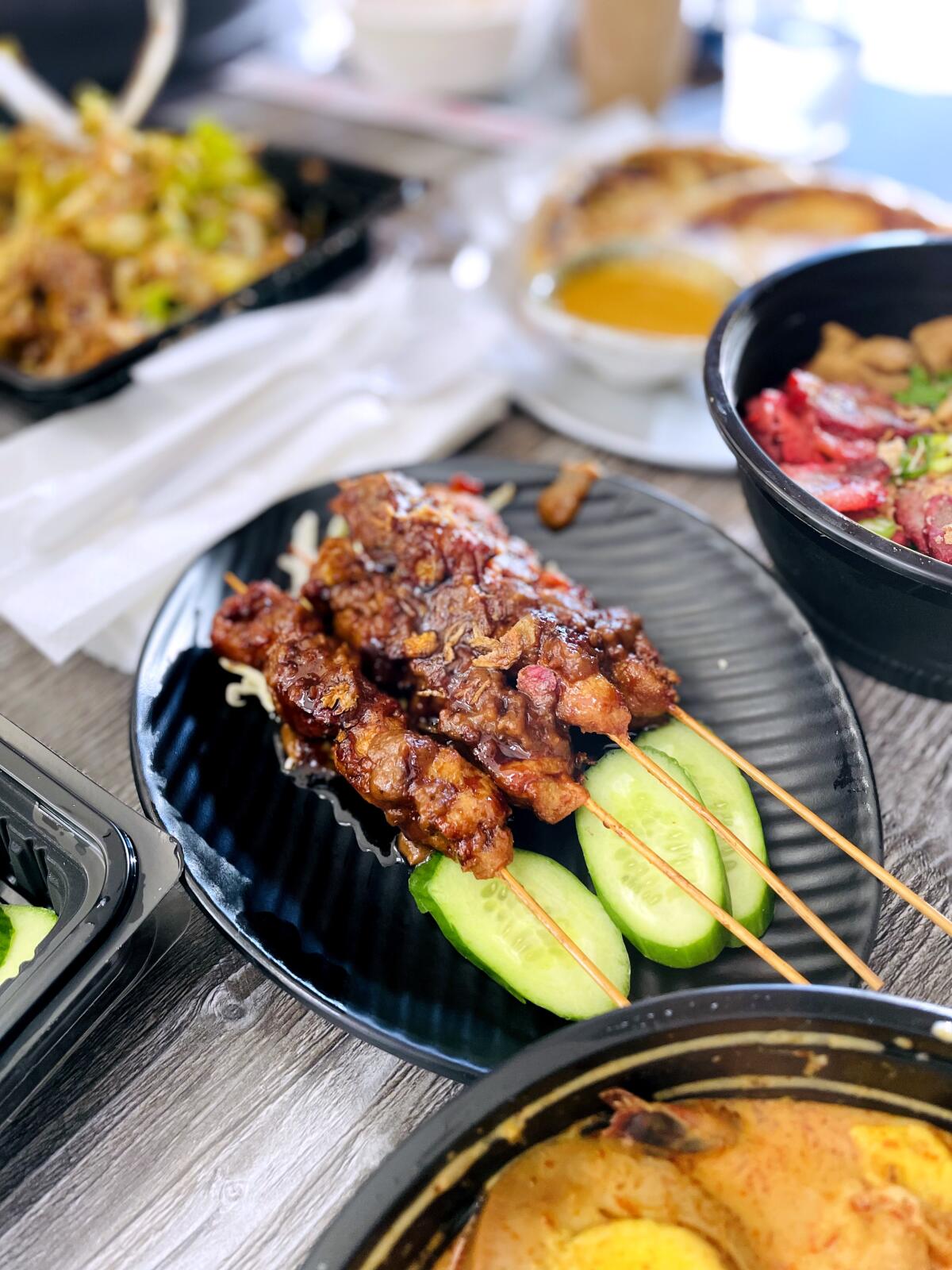
The food, which can involve as many as 15 different ingredients in one dish, required cooks experienced in the cuisine. But as things get better, the Buena Park branch is now making a comeback and the essential work of introducing Indonesian food to America continues.
Rice & Noodle
608 E. 1st St.
Tustin
When Semarang-born Daniel Widjaja bought Salathai Restaurant in L.A.’s Chinatown from the original owners back in 2005, he left behind his career in structural engineering. Years before he decided to take over the business, he had struck up a friendship with the owners, learning Thai cooking and the restaurant business.
Last year, he was forced to relocate his eatery because the building it occupied was going to be demolished to make way for apartments. But with a new L.A. location stuck in red tape, he decided to move to Tustin and name his new concept Rice & Noodle. And that was how Orange County gained its third and newest Indonesian restaurant.
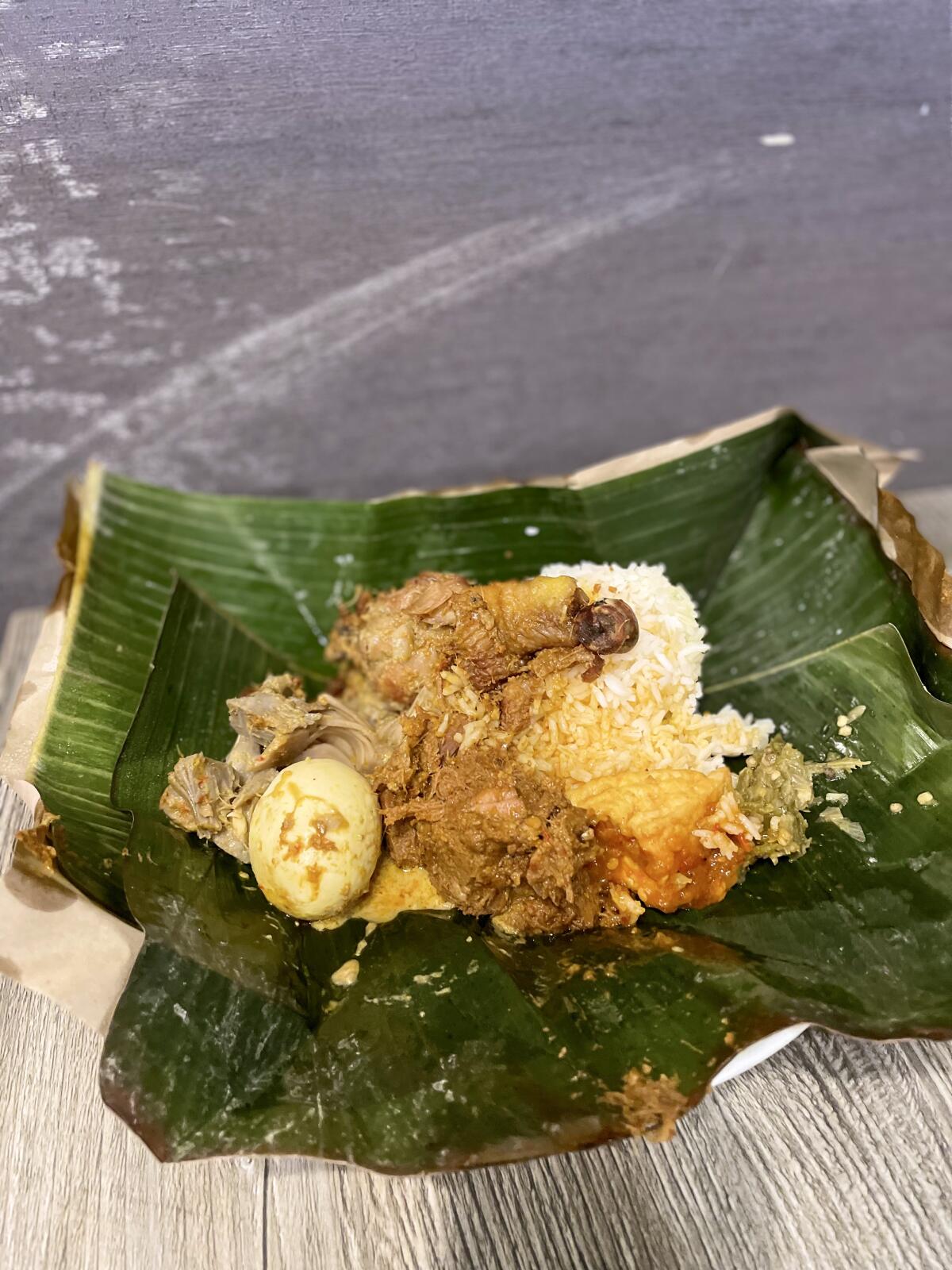
With a new county, new customers, and a new name, Widjaja decided to augment his Thai menu to include the food of his homeland. He saw Indonesian food as an opportunity and believed there was an unmet demand. Though he kept the Thai dishes around for the uninitiated, he hired a chef from Jakarta to keep the Indonesian dishes unflinchingly authentic.
The nasi bungkus, topped with rendang, fried chicken, stewed jackfruit, tofu, and a hard-boiled egg, also has two kinds of sambal so hot they activate all the sweat glands. And the peanut sauce that blankets his gado gado is as creamy as the boiled vegetables are crisp-tender.

The most basic dish is also the most unapologetically spicy. For the tahu and tempeh penyet, his chef fries the tofu and tempeh (a soybean cake indigenous to the island nation), squashes them flat with a pestle, then serves them in the same stone mortar he used to grind fistfuls of chilies into sambal. This one will set your mouth ablaze.
But when it comes to Indonesian food lovers, the more the food burns, the more it resonates. In the few months Rice & Noodle has been open, the restaurant sees a full house of Indonesians on weekends. Widjaja was right: there’s pent-up demand for more Indonesian restaurants among OC’s Indonesians. Now if only everyone else can give it a shot.
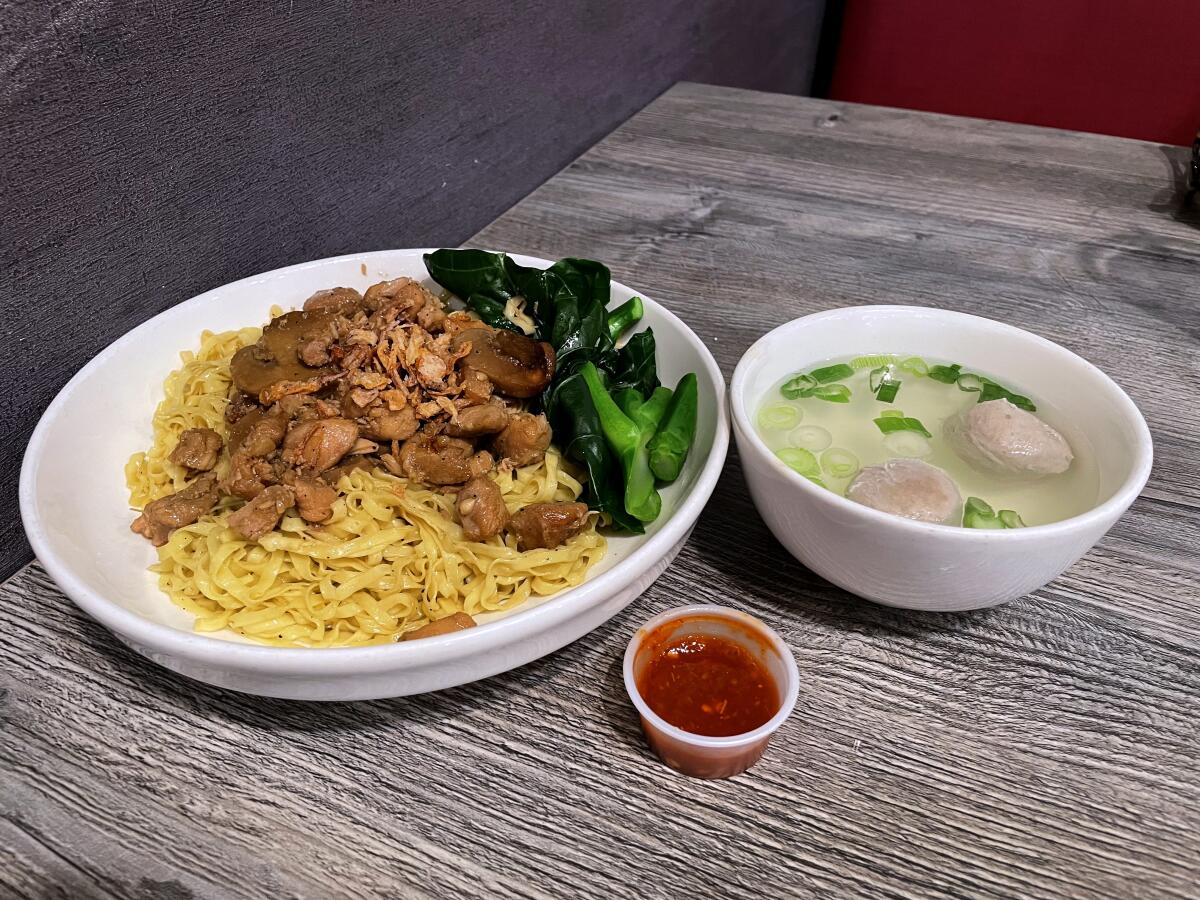
All the latest on Orange County from Orange County.
Get our free TimesOC newsletter.
You may occasionally receive promotional content from the Daily Pilot.



